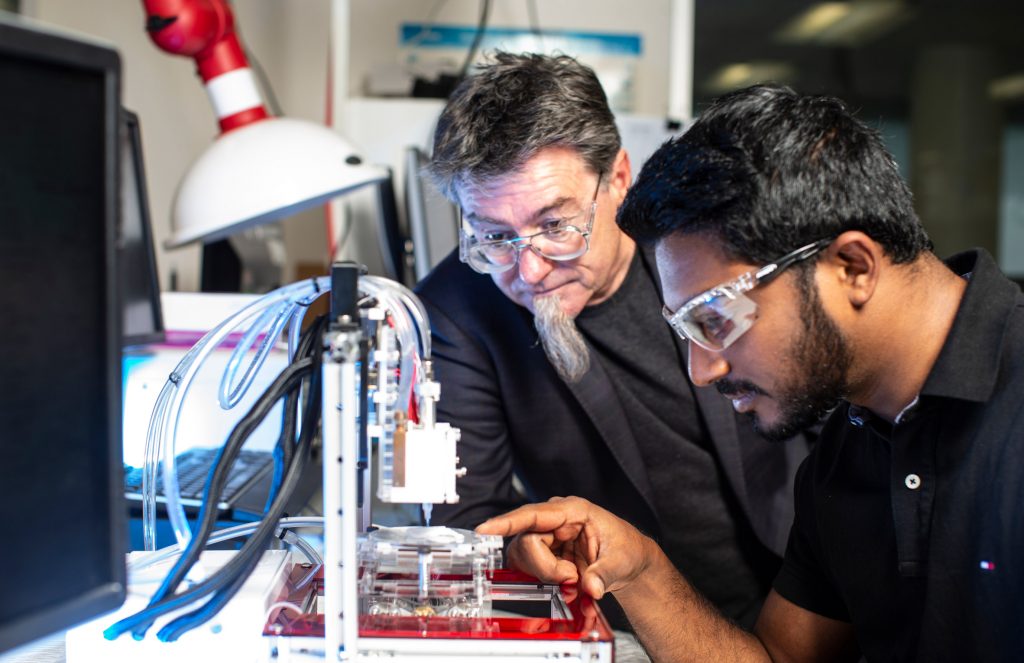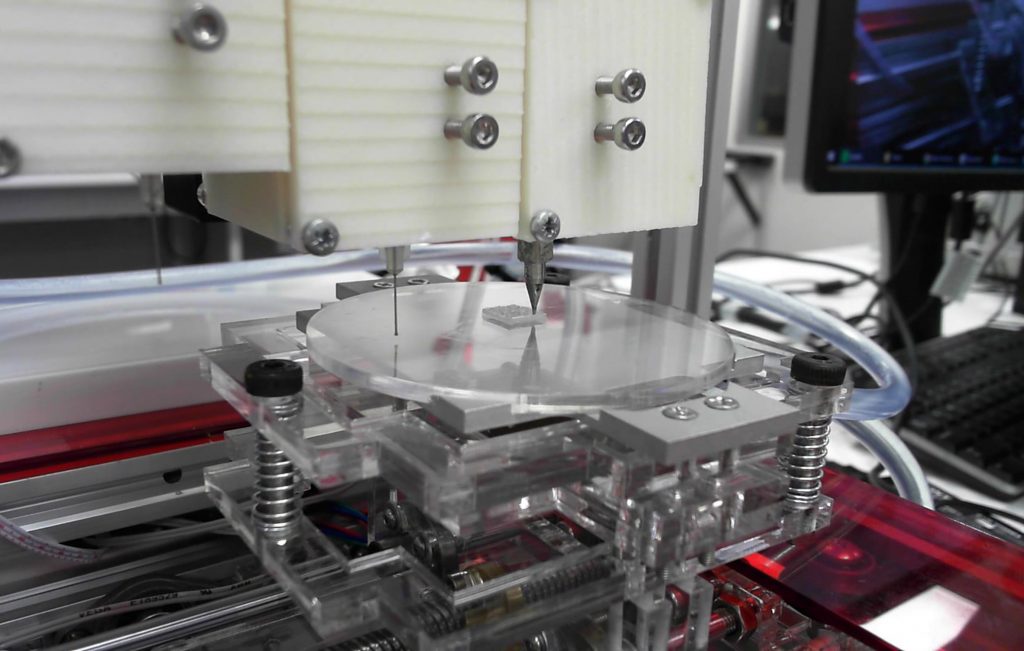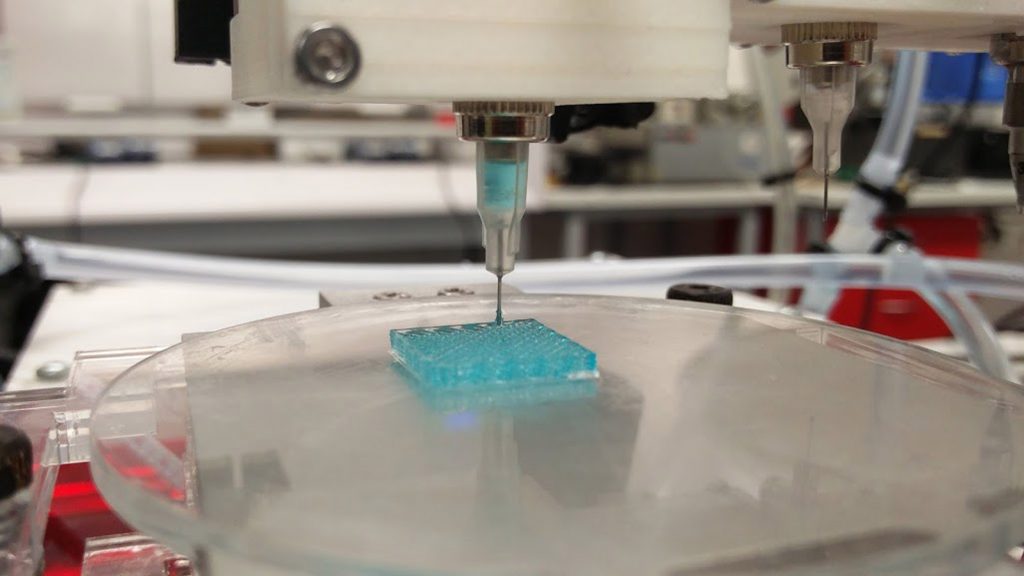There is no doubt that 3D printing offers more and more promise to the medical industry, and that has helped to save and improve lives in many ways.
A team from the University of Wollongong (UOW), Australia, who are working at the ARC Centre of Excellence for Electromaterials Science (ACES) in collaboration with Payal Mukherjee, a nose and throat surgeon, and Associate Professor at the University of Sydney School of Medicine, have developed a 3D bioprinter that replicates human ears. These replicas can be used in a reconstructive surgery. Their 3D bioprinter called “3D Alek”, is a multi-materials 3D printer customized for biofabrication.
Bioprinters use a pipette, which is computer-guided. Instead of using metal or plastic, the pipette layers living cells, which are referred to as “bio-ink”. Bio-ink was developed by researchers at University of Wollongong and the Australian National Fabrication Facility and it uses stem cells to print tissue constructs or organoids for medical research. In the case of 3D Alek, it prints human ear cartilage as to create a “living ear” to treat congenital ear deformities.
This new technology, as researchers say, brings them closer to revolutionizing a complex medical procedure for children with microtia. To understand this congenital condition better: microtia is the deformity of the outer ear where the ear doesn’t develop fully during the first trimester of pregnancy. Mukherjee, claims that this particular ear deformity treatment is demanding: the outer ear 3D shape is extremely complex because of its length, breadth, height, and projection from the skull.
Mukherjee believes that bioprinting is extremely exciting since “it allows an ear graft to be designed and customized according to the patient’s face using their natural tissue”. For her, it would result in a reduced operating time and an improved cosmetic outcome, as well as avoiding the complexity of finding a cartilage donor site.
3D Alek was recently installed at the Royal Prince Alfred Hospital (RPA) in Sydney, and has become the world’s first hospital in New South Wales to have a 3D bioprinter. However, researchers hope to improve their bio-ink for it to match the patient’s anatomy by using the patient’s own stem cells to grow the ear cartilage. The ear abnormality is specific on every patient and it depends on their facial features, thus the idea is to print a customized ear perfect for each patient.
Professor Gordon Wallace, ACES Director, said: “The 3D Alek collaboration had benefited from drawing upon the diverse skills of a range of scientists, engineers and clinicians to bring about real advances to tackle this significant medical challenge.”
For Wallace, the project illustrates their ability to manage a successful pipeline to turn fundamental research into a strategic application to create a new health solution to improve people’s lives.
“We have been responsible for the primary sourcing of materials; the formulation of bio-inks and the design and fabrication of a customized printer; the design of required optimal protocols for cell biology; through to the final clinical application. With one 3D Alek now established in a clinical environment at RPA and a replica in our lab at TRICEP (The Translational Research Initiative for Cell Engineering and Printing) , our new 3D bioprinting initiative, we will be able to fast-track the next stages of our research to deliver a practical solution to solve this clinical challenge,” Wallace added.
Sources: [Dezeen, University of Wollongong, Verdict Medical Devices / Images: Dezeen]
Subscribe to Our Email Newsletter
Stay up-to-date on all the latest news from the 3D printing industry and receive information and offers from third party vendors.
You May Also Like
3D Printing News Briefs, April 13, 2024: Robotics, Orthotics, & Hypersonics
In 3D Printing News Briefs today, we’re focusing first on robotics, as Carnegie Mellon University’s new Robotics Innovation Center will house several community outreach programs, and Ugogo3D is now working...
3D Printing Webinar and Event Roundup: March 24, 2024
We’ve got a very busy week of webinars and events, starting with Global Industrie Paris and a members-only roundtable for AM Coalition. Stratasys will continue its advanced in-person training and...
MIMO TECHNIK, ASTRO Test Lab & LEAP 71 Combine Powers for Computational Engineering in Aerospace 3D Printing
California-based MIMO TECHNIK, a service bureau catering to demanding clients in the New Space and defense sectors, operates with six SLM 500s, four SLM 280s, and three SLM 125s. ASTRO...
EOS Taps 1000 Kelvin for “First” AI Co-pilot for 3D Printing
Additive manufacturing (AM) startup 1000 Kelvin has joined forces with EOS to integrate AMAIZE, a pioneering artificial intelligence (AI) co-pilot for AM, into the EOS software suite. The solution aims...

































